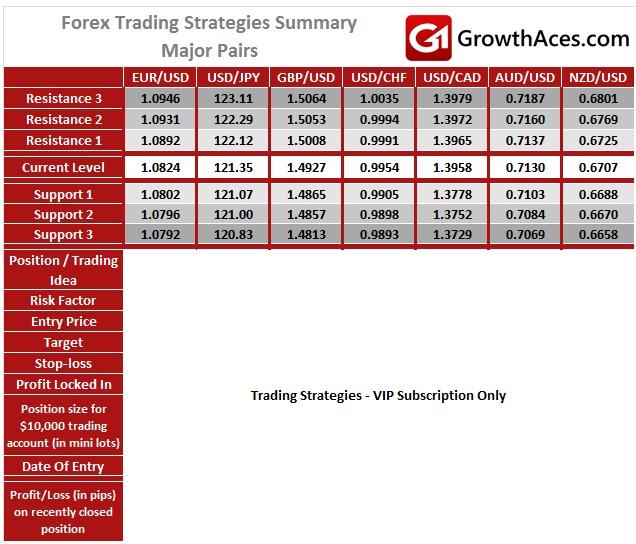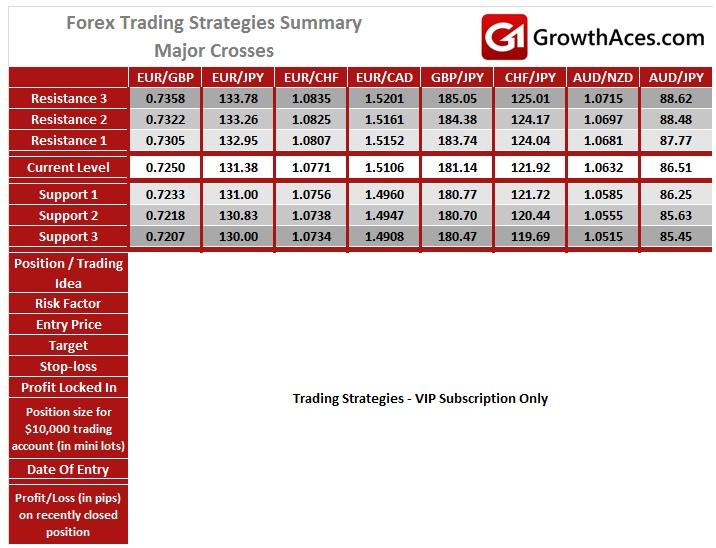USD/JPY: BOJ Fine-Tuned Its Stimulus Programme
As widely expected, the BOJ kept intact its policy target of increasing or cash and deposits in circulation by JPY 80 trillion and the pace at which it buys government bonds and trust funds investing in stocks and property.
But it decided to extend the duration of the Japanese government bonds (JGBs) it buys from 10 to 12 years from 2016 and set up a 300-billion-yen fund to buy exchange-traded funds (ETFs) that specifically target firms actively spending on capital expenditure and wages. The central bank said it would initially target ETFs that track the JPX-Nikkei 400 index which features companies that promote transparency and good governance. It also said it would sell from April next year shares it had bought from financial institutions, giving it the power to buy shares of firms that meet its wage and investment standards.
BOJ Governor Haruhiko Kuroda said the fine-tuning will allow the bank to sustain or even expand stimulus more easily, dismissing the views of some investors that it was taken to avoid bolder steps as its bond buying was drying up market liquidity.
Kuroda said the new steps do not amount to additional monetary easing as they did not address downside risks to the economy. He also said they were not directly spurred by the US Federal Reserve's decision on Wednesday to raise interest rates. He said: “Companies and households are shifting away from a deflationary mindset (…) But there are discrepancies among sectors, so we want to broaden the positive momentum. We wanted to do whatever we can to support this drive."
Today’s measures found three dissenters on the BOJ's nine-member board. This suggests that Kuroda may struggle to win enough votes if he were to propose expanding stimulus. Kuroda attempted to keep alive market expectations of further monetary easing, stressing his resolve to take “bold action” if needed to achieve its price target.
Japanese Finance Minister Taro Aso said that the Bank of Japan made an appropriate decision earlier in the day to supplement its massive stimulus programme.
The USD/JPY initially rose to 123.59 after the BOJ announcement. However, this reaction was short-lived and the USD/JPY strengthened significantly a few minutes later. This shows that market was not sure how to interpret the BOJ action. Many investors had not expect any BOJ action, especially right after FOMC move. For these investors the BOJ action was a dovish surprise. On the other hand, many market participants interpreted the BOJ action only as a fine-tuning of its policy and a suggestion that the BOJ would not expand its base money target under its stimulus programme.
Further USD/JPY volatility cannot be excluded after today’s wild swings. There are plenty of support levels below. Our trading strategy will be to buy the USD/JPY near daily cloud base at 120.80 and place the stop-loss below very strong support level of 120.00.
USD/CAD: Will Canadian Inflation Data Stop The USD/CAD Rally?
The Canadian dollar's seemingly relentless weakness against its US counterpart extended further on Thursday, with the loonie at one point nearing the 1.40 level it last breached for a single day in 2004.
The currency was stung by a broadly higher greenback, after the Federal Reserve hiked interest rates on Wednesday, and by further declines in the price of crude oil, a major Canadian export.
The currency had largely traded between 1.32 and 1.34 through November, but has weakened to 11-and-a-half-year lows since as crude sunk and stuck below USD 40 a barrel and the Fed hike approached.
The Canadian and US economies are traditionally so closely linked that monetary policy tends to be more or less in sync. The negative long-term interest rate differential relative to the United States pushes capital out of Canada in pursuit of higher yields, thus leading to downward pressure on the loonie.
In our opinion many negative factors for the CAD are already priced in (fall in oil prices, technical recession in Canada in the first half of the year, diverging monetary policies of Canada and the USA) and further upside USD/CAD potential is limited. Current levels seem attractive to get short, but this strategy is risky. Canadian inflation data for November is awaited today (13:30 GMT). We expect a pickup in the consumer price index to a 1.5% yoy from 1.0% yoy a month earlier. Higher Canadian inflation reading may stop recent USD/CAD bullish trend.
MAJOR PAIRS:
MAJOR CROSSES:
How to read these tables?
Support/Resistance - three closest important support/resistance levels
Position/Trading Idea: Buy/Sell - It means we are looking to open Long/Short position at the Entry Price. If the order is filled we will set the suggested Target and Stop-loss level. Long/Short - It means we have already taken this position at the Entry Price and expect the rate to go up/down to the Target level.
Stop-Loss/Profit Locked In - Sometimes we move the stop-loss level above (in case of Long) or below (in case of Short) the Entry price. This means that we have locked in profit on this position.
Risk Factor - green "*" means high level of confidence (low level of uncertainty), grey "**" means medium level of confidence, red "***" means low level of confidence (high level of uncertainty)
Position Size - position size suggested for a USD 10,000 trading account in mini lots. You can calculate your position size as follows: (your account size in USD/USD 10,000) * (our position size). You should always round the result down. For example, if the result was 2.671, your position size should be 2 mini lots. This would be a great tool for your risk management!
Profit/Loss on recently closed position - is the amount of pips we have earned/lost on recently closed position.
Our research is based on information obtained from or are based upon public information sources. We consider them to be reliable but we assume no liability of their completeness and accuracy. All analyses and opinions found in our reports are the independent judgment of their authors at the time of writing. The opinions are for information purposes only and are neither an offer nor a recommendation to purchase or sell securities. By reading our research you fully agree we are not liable for any decisions you make regarding any information provided in our reports. Investing, trading and speculation in any financial markets may involve high risk of loss. We strongly advise you to contact a certified investment advisor and we encourage you to do your own research before making any investment decision.
Recommended Content
Editors’ Picks
EUR/USD hovers around 1.0700 after German IFO data

EUR/USD stays in a consolidation phase at around 1.0700 in the European session on Wednesday. Upbeat IFO sentiment data from Germany helps the Euro hold its ground as market focus shifts to US Durable Goods Orders data.
USD/JPY refreshes 34-year high, attacks 155.00 as intervention risks loom

USD/JPY is renewing a multi-decade high, closing in on 155.00. Traders turn cautious on heightened risks of Japan's FX intervention. Broad US Dollar rebound aids the upside in the major. US Durable Goods data are next on tap.
Gold price trades with mild negative bias, manages to hold above $2,300 ahead of US data

Gold price (XAU/USD) edges lower during the early European session on Wednesday, albeit manages to hold its neck above the $2,300 mark and over a two-week low touched the previous day.
Worldcoin looks set for comeback despite Nvidia’s 22% crash Premium

Worldcoin price is in a better position than last week's and shows signs of a potential comeback. This development occurs amid the sharp decline in the valuation of the popular GPU manufacturer Nvidia.
Three fundamentals for the week: US GDP, BoJ and the Fed's favorite inflation gauge stand out Premium

While it is hard to predict when geopolitical news erupts, the level of tension is lower – allowing for key data to have its say. This week's US figures are set to shape the Federal Reserve's decision next week – and the Bank of Japan may struggle to halt the Yen's deterioration.

